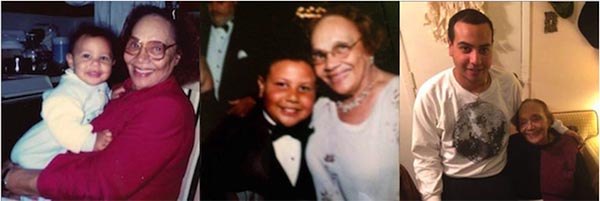An introduction from Be’chol Lashon’s Rabbi Ruth Abusch Magder: The internet might have us think that Torah scholars are white old men. Esther Graff-Radford is none of these and her take on the Talmud highlights how much diversity can expand our understanding of Jewish texts. The Talmud is one if not the most important collections of Jewish wisdom and law. The compilation, which is 38 volumes, includes records of ancient debates and oral tradition, which were first written down in the third century and further codified in two editions -one in Babylonia and the other in Jerusalem. The discursive language and the complex discussions make it exceptionally valuable but also a challenge to understand. For the last few years, Esther Graff-Radford has drawn on her own life experience to navigating this ancient treasure.
We present the following essay about the Talmud two ways. First as a stand alone essay about the complex books of Jewish legal codes called the Talmud,and second as a piece with commentaries that provide both background and contemporary insight in the fashion of the Talmud.
 The space in my mind where I study Talmud looks like my Papa’s backyard. It smells like barbecued chicken and hot charcoal and it sounds like a crowd of Black folks laughing and arguing and carrying on over potato salad. My Gemara is a Black Southern cookout. I recognized it deep in my bones the first time I opened a tractate. The Gemara welcomed me with natal rhythms: collective narration, trans-generational interpretation, perpetual argument, community care, technicolor metaphors, wild fish stories, scandalous gossip, and earned authority. The Talmud is The Cookout, in Aramaic.
The space in my mind where I study Talmud looks like my Papa’s backyard. It smells like barbecued chicken and hot charcoal and it sounds like a crowd of Black folks laughing and arguing and carrying on over potato salad. My Gemara is a Black Southern cookout. I recognized it deep in my bones the first time I opened a tractate. The Gemara welcomed me with natal rhythms: collective narration, trans-generational interpretation, perpetual argument, community care, technicolor metaphors, wild fish stories, scandalous gossip, and earned authority. The Talmud is The Cookout, in Aramaic.
When I study Talmud, the little Black girl in my soul is sitting in a metal folding chair right on the edge of the smoke from a tin drum BBQ pit, soaking up everything the aunties and uncles have to say. She’s parsing the literal from the metaphorical. She’s noticing the arguments and the conclusions, but more than that, she’s soaking up how the elders disagree and how consensus is made. She’s memorizing the ancestors and the dispersed, mapping who was an authority, who a buffoon, who a lost cause. These people are not all present but they become part of her through the talk at the cookout. The cast of characters includes family, neighbors, ex-wives, aunty-mamas, play cousins, foster kids, the dean of the local school and the neighborhood bum. She’s learning that there are sins and reparations and things that can’t be repaired. Some jokes she gets, some she’ll ask an older cousin to explain later. There’s a lot of nitpicking who said what, who wore what, who is whose daddy, who caught the biggest fish and made the best touchdown and planted the best garden, who moved too far away, and who told Death to go jump in a lake. She’s noticing where among her own it is dangerous to be a woman, a loud girl, a smart girl, a sexual girl. The metaphors are vivid, the laughter is loud, everything is more complicated than it looks and way simpler than it sounds. The arguments are vociferous and cyclical, the jokes are sometimes but rarely cruel, the narrative is communal. The whole thing is mostly – mostly- for the sake of heaven.
And there’s a deeper layer. It’s not just the familiar feeling of the generations gathering to yell at-with each other about things important and strange. It’s that the cookout and the Talmud share a deep mission. They are both containers for existential conversations my elders let me in on because I am theirs. These are not minstrel shows for outside consumption and entertainment. These are our fora for celebrating our joys, mulling our problems and transmitting our ways to the next generation. It is the elders’ loving gift of showing their People-preserving work, telling me not just what the rules are but also how to arrive at the rules without breaking the community. Here, I learn the difference between dissent and disrespect. Here are the overlapping, intergenerational conversations of minorities in diaspora, ruled by powers that need them but don’t love them. The cookouts on the patio and on the page both grapple with the tension between being fully Us and being respectable to Them. What do we do when our grief scares Them? How do we abide when our temples are bombed, our sages are murdered, and no voice from heaven is coming to save us? What are joy, feasting, childbearing and mutual aid in a world that doesn’t want to see us thrive? How will we honor our teachers, elders, and authorities in cultures that disrespect and lampoon them? How will we care for our bodies – our own, our lovers’, our children’s- in systems where our bodies are not safe? How will we safeguard our covenants when our rituals are shattered, our teachers are scattered, and our priests have forgotten their names? How do we claim and reclaim our cultural treasures when they are constantly being appropriated and sold back to us at the point of a gun? How shall we mind our own business while keeping a practical eye on everything else? The cookout on the page is how. We’ll gather in real life and metaphorically and do the loving labor of transmitting the ways and the methods, and we’ll throw in some really good gossip and stories, too, because that’s what we do.







